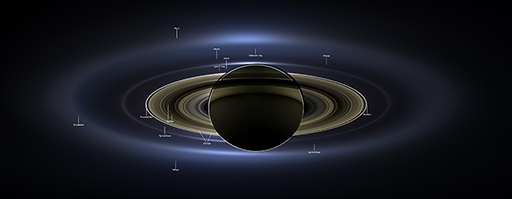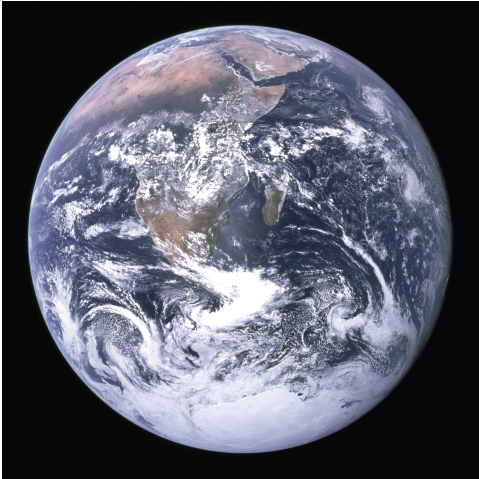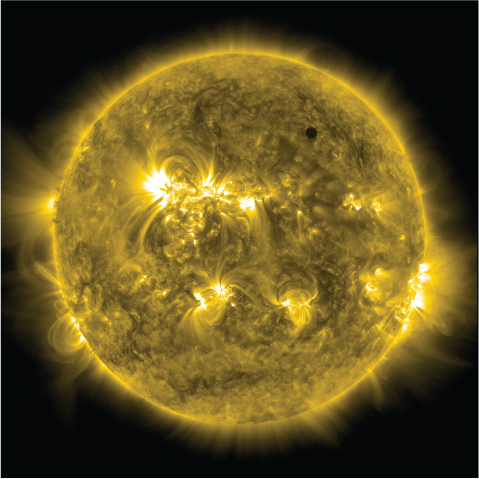1 What is a planet?
What is a planet? Most people, if asked, can name at least one planet: the Earth (Figure 1).
The word ‘planet’ comes from the ancient Greeks who observed ‘wanderers’ in the night sky – bright star-like objects which gradually moved against the background pattern of stars. We now have the ability to view them as much more than just points of light.
Occasionally, the media showcases stunning photographs of planets, such as the one of Saturn, taken by a spacecraft (Figure 2).

Some of us were lucky enough to catch one of the recent ‘transits’ of the planets Venus and Mercury. In a transit, a planet passes directly between the Earth and Sun, appearing as a dark spot silhouetted against the Sun’s bright surface.
Figure 3 shows the latest transit of Venus across the Sun, which took place in 2012. Venus can be seen as a round black spot towards the top right on the Sun. This image was taken by the NASA Solar Dynamics Observatory with a particular colour filter that is sensitive to the Sun’s outer atmosphere.


